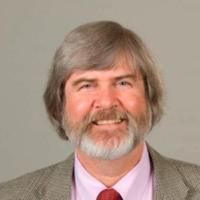ECMM/ISHAM recommendations for clinical management of COVID-19 associated mucormycosis in low- and middle-income countries.
Date
2021-09
Journal Title
Journal ISSN
Volume Title
Repository Usage Stats
views
downloads
Citation Stats
Abstract
Reports are increasing on the emergence of COVID-19-associated mucormycosis (CAM) globally, driven particularly by low- and middle-income countries. The recent unprecedented surge of CAM in India has drawn worldwide attention. More than 28,252 mucormycosis cases are counted and India is the first country where mucormycosis has been declared a notifiable disease. However, misconception of management, diagnosing and treating this infection continue to occur. Thus, European Confederation of Medical Mycology (ECMM) and the International Society for Human and Animal Mycology (ISHAM) felt the need to address clinical management of CAM in low- and middle-income countries. This article provides a comprehensive document to help clinicians in managing this infection. Uncontrolled diabetes mellitus and inappropriate (high dose or not indicated) corticosteroid use are the major predisposing factors for this surge. High counts of Mucorales spores in both the indoor and outdoor environments, and the immunosuppressive impact of COVID-19 patients as well as immunotherapy are possible additional factors. Furthermore, a hyperglycaemic state leads to an increased expression of glucose regulated protein (GRP- 78) in endothelial cells that may help the entry of Mucorales into tissues. Rhino-orbital mucormycosis is the most common presentation followed by pulmonary mucormycosis. Recommendations are focused on the early suspicion of the disease and confirmation of diagnosis. Regarding management, glycaemic control, elimination of corticosteroid therapy, extensive surgical debridement and antifungal therapy are the standards for proper care. Due to limited availability of amphotericin B formulations during the present epidemic, alternative antifungal therapies are also discussed.
Type
Department
Description
Provenance
Citation
Permalink
Published Version (Please cite this version)
Publication Info
Rudramurthy, Shivaprakash M, Martin Hoenigl, Jacques F Meis, Oliver A Cornely, Valliappan Muthu, Jean Pierre Gangneux, John Perfect, Arunaloke Chakrabarti, et al. (2021). ECMM/ISHAM recommendations for clinical management of COVID-19 associated mucormycosis in low- and middle-income countries. Mycoses, 64(9). pp. 1028–1037. 10.1111/myc.13335 Retrieved from https://hdl.handle.net/10161/23699.
This is constructed from limited available data and may be imprecise. To cite this article, please review & use the official citation provided by the journal.
Collections
Scholars@Duke

John Robert Perfect
Research in my laboratory focuses around several aspects of medical mycology. We are investigating antifungal agents (new and old) in animal models of candida and cryptococcal infections. We have examined clinical correlation of in vitro antifungal susceptibility testing and with in vivo outcome. Our basic science project examines the molecular pathogenesis of cryptococcal infections. We have developed a molecular foundation for C. neoformans, including transformation systems, gene disruptions, differential gene expression screens, and cloning pathogenesis genes. The goal of this work is to use C. neoformans as a model yeast system to identify molecular targets for antifungal drug development. There are a series of clinical trials in fungal infections which are being coordinated through this laboratory and my work also includes a series of antibiotic trials in various aspects of infections. Finally, we have now been awarded a NIH sponsored Mycology Unit for 5 years with 6 senior investigators which is focused on C. neoformans as a pathogenic model system, but will include multiple areas of medical mycology from diagnosis to treatment.
Unless otherwise indicated, scholarly articles published by Duke faculty members are made available here with a CC-BY-NC (Creative Commons Attribution Non-Commercial) license, as enabled by the Duke Open Access Policy. If you wish to use the materials in ways not already permitted under CC-BY-NC, please consult the copyright owner. Other materials are made available here through the author’s grant of a non-exclusive license to make their work openly accessible.
